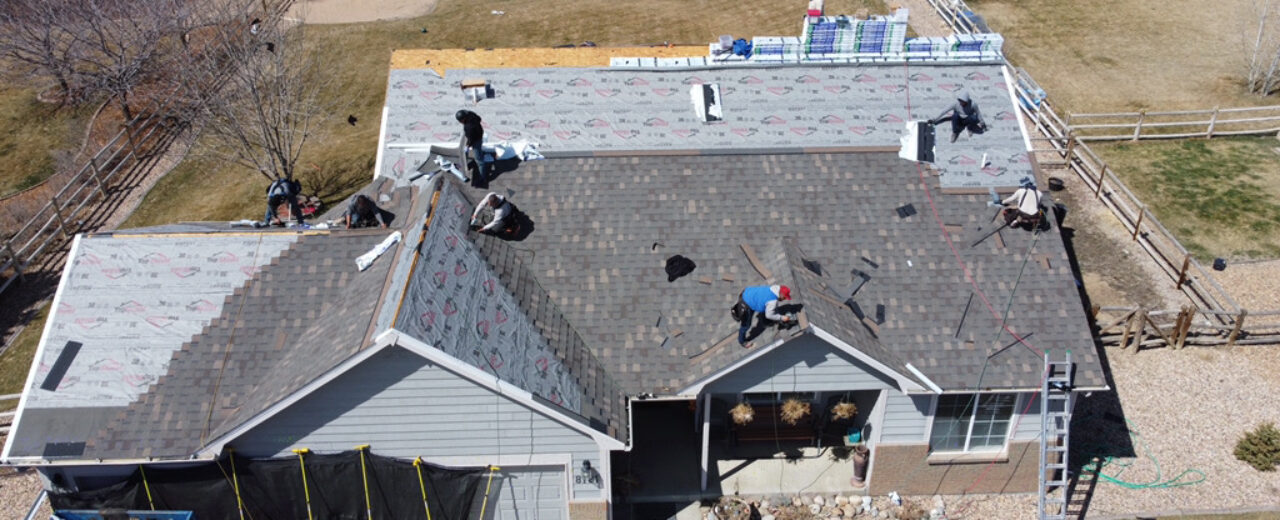Roofing Myths Debunked: What You Need to Know
Many myths and misconceptions regarding roofing can lead to costly mistakes and unnecessary stress. Whether you’re a homeowner looking to replace your roof or just someone interested in maintenance, it’s essential to separate fact from fiction. In this blog, we’ll bust some of the most common roofing myths to help you make informed decisions.
Myth #1: You Only Need to Replace Your Roof When It Leaks
Debunked: Many people believe that as long as their roof isn’t leaking, it doesn’t need any attention. However, waiting until leaks appear can be a costly mistake. When water starts dripping inside, damage to the roof’s structure, insulation, and interior spaces may have already occurred. Regular inspections and maintenance can help identify potential issues before they escalate into major problems.
Myth #2: Roof Repairs Are Just as Good as a Full Replacement
Debunked: While repairs can extend the lifespan of your roof, they are not always a permanent solution. If your roof is old, has widespread damage, or has undergone multiple repairs, a complete replacement might be the best long-term investment. Patching up one area won’t fix underlying structural issues, and continuing to repair an aging roof can cost more in the long run.
Myth #3: A New Roof Doesn’t Need Maintenance
Debunked: Just because you’ve installed a brand-new roof doesn’t mean you can forget about it. Like any other part of your home, a roof requires regular maintenance to maximize lifespan. Cleaning gutters, checking for damaged shingles, and inspecting for signs of wear and tear can prevent minor problems from turning into expensive repairs.
Myth #4: The More Insulation, the Better
Debunked: While insulation is essential for energy efficiency, too much of it can lead to improper ventilation, causing moisture buildup and mold growth. A properly balanced roofing system includes adequate ventilation to allow moisture to escape while maintaining insulation levels that prevent heat loss.
Myth #5: Dark-Colored Roofs Make Homes Much Hotter
Debunked: While darker roofs absorb more heat, modern roofing materials and proper attic ventilation can significantly reduce heat transfer into the home. Reflective shingles, insulation, and venting systems all play a role in keeping your home comfortable, regardless of roof color.
Myth #6: Metal Roofs Attract Lightning
Debunked: Many homeowners worry that metal roofs will increase the chances of a lightning strike. The truth is that metal roofs do not attract lightning. Metal is non-combustible, making it safer than other materials in the event of a lightning strike. It helps to dissipate electricity rather than intensify it.
Myth #7: Roofs Last as Long as Their Warranty
Debunked: A warranty indicates the expected durability of roofing materials, but it doesn’t guarantee that your roof will last that long. Weather conditions, maintenance habits, and installation quality all affect the lifespan of your roof. Regular inspections and proper care are key to maximizing its longevity.
Myth #8: You Can Install a New Roof Over an Old One
Debunked: While it may be possible to layer new shingles over an existing roof, it’s generally not recommended. Adding another layer can hide underlying damage, increase the weight of your roof structure, and reduce its lifespan. A proper roof replacement involves stripping off the old materials and ensuring the new installation is done correctly.
Final Thoughts
Your roof is one of the most essential parts of your home, and believing in myths can lead to costly mistakes. Regular maintenance, professional inspections, and making informed decisions will keep your roof in shape for years. If you’re unsure about your roof’s condition or need professional guidance, consult a roofing expert to ensure your home stays protected.


